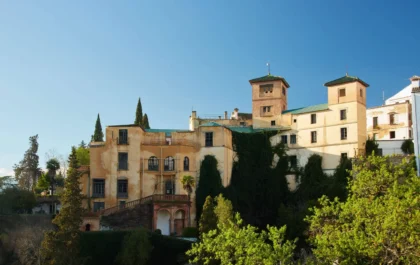Villa Mercedes, located in the heart of the San Luis Province in Argentina, is a town that transcends the ordinary. It’s a place where history echoes through cobblestone streets, where architectural marvels stand tall, and where vibrant traditions thrive. In this exploration, we delve into the lesser-known facets of Villa Mercedes, from its founding to its indigenous roots, celebrating the unique characteristics that make it a standout destination.
Unearthing Lesser-Known Marvels: Villa Mercedes’s Historical Tapestry
Founding and Name Origin: Villa Mercedes traces its roots back to September 20, 1856, when Juan Konig, a visionary German immigrant, laid the foundation. The city’s nomenclature, “Villa Mercedes,” pays homage to Konig’s wife, Mercedes Sosa, translating to the “Village of Mercedes” in English.
Railway Hub Legacy: During the late 19th and early 20th centuries, Villa Mercedes played a pivotal role in Argentina’s railway network development, emerging as a key hub. This connectivity catalyzed the city’s economic growth and development.
La Pedrera Reservoir Oasis: In the vicinity of Villa Mercedes lies the enchanting La Pedrera Reservoir, a haven for outdoor enthusiasts. Fishing, boating, water sports, camping, and scenic picnics are some of the recreational pursuits it generously offers.
Architectural Heritage: Villa Mercedes proudly showcases a fusion of architectural styles reflecting its rich history. Preserving gems like the Municipal Palace and the San Luis Gonzaga Church, the city stands as a testament to its past and cultural influences.
Indigenous Legacy Celebration: Acknowledging the region’s indigenous heritage, Villa Mercedes celebrates the legacy of the Huarpe people through cultural events and initiatives, fostering a deep connection with its roots.
Carnival Extravaganza: Immerse yourself in the vibrant “Carnavales Mercedinos,” an annual carnival that paints the town with colourful parades, music, dance, and elaborate costumes, captivating both locals and visitors alike.
Industrial Renaissance: In recent decades, Villa Mercedes has undergone significant industrial growth, housing diverse sectors such as food processing, manufacturing, and textile production. This industrial boom has propelled economic prosperity and employment opportunities.
Cultural Oasis: Puertas del Sol: Experience the thriving cultural scene of Villa Mercedes through its numerous cultural centres, theatres, and art galleries. The Cultural Center “Puertas del Sol” serves as a focal point for art exhibitions, theatre performances, and creative workshops.
Sporting Passion: Known for its fervour for football (soccer), Villa Mercedes hosts several football clubs, drawing enthusiastic crowds. Beyond football, the city embraces basketball, tennis, and athletics, fostering a rich sports culture.
Melodies of Tradition: Villa Mercedes takes pride in hosting the National Festival of Popular Song, a renowned musical celebration showcasing Argentina’s folk music. This festival unites folk artists from across the country, creating a harmonious blend of tradition and modernity.
Unveiling Villa Mercedes’s Unique Identity
Beyond Wool and Horses: Situated in the Cuyo region, Villa Mercedes is renowned for its wool and horse production, thermal baths, neighbouring vineyards, and captivating natural sites like Lago De La Plaza.
Historical Timeline: Established in 1772 by Spanish Friar Agustin Infante, Villa Mercedes endured challenges, including raids by Native Americans. Repopulated in 1807 and renamed after a hero of the Spanish-American War, Juan Mercedes, the city evolved into a significant population centre.
Industrial Boom and Growth: The city’s development gained momentum in the 1930s, fueled by an influx of immigrants during Argentina’s industrial expansion. Subsequent decades witnessed substantial growth in industry and population, solidifying Villa Mercedes’s status as a major hub.
Contemporary Flourish: In the 1970s, Villa Mercedes continued its upward trajectory, attracting migrants and tourists. Today, it is a bustling commercial and agricultural hub, housing large companies and the esteemed University of San Luis.
Small Town Atmosphere: Remarkably, despite its size and development, Villa Mercedes retains the charming ambience of a small village. This unique blend makes it a sought-after destination for tourists seeking urban amenities and rural tranquillity.
Culinary and Cultural Haven: Villa Mercedes beckons culinary enthusiasts with its diverse gastronomic offerings, featuring traditional Argentine cuisine alongside global flavours. Cultural landmarks like Plaza de la Libertad and the Municipal Palace add depth to the city’s allure.
Architectural Symphony: The city’s architectural landscape gracefully marries modernist and classical styles, creating a visual tapestry that mirrors Villa Mercedes’s dynamic spirit.
In concluding our journey through Villa Mercedes, it becomes evident that this city is not merely a geographical location; it’s a living, breathing story. From the rhythmic beats of the “Carnavales Mercedinos” to the architectural symphony that graces its skyline, Villa Mercedes beckons travellers to immerse themselves in its rich narrative. Whether you seek outdoor adventures at La Pedrera Reservoir or savour the cultural delicacies at Plaza de la Libertad, this city offers a tapestry of experiences. So, as you bid farewell to Villa Mercedes, carry with you the echoes of its past, the vibrancy of its present, and the promise of future discoveries in this Argentine gem.
Related posts
Subscribe for newsletter
* You will receive the latest news and updates on your favorite celebrities!
